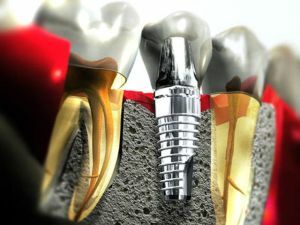 Even the absence of one tooth brings a number of inconveniences to a person. The load is transferred to the remaining teeth, their condition worsens and their displacement occurs to the place of the emptiness appeared.
Even the absence of one tooth brings a number of inconveniences to a person. The load is transferred to the remaining teeth, their condition worsens and their displacement occurs to the place of the emptiness appeared.
Implantation is one of the effective ways to restore lost teeth of the upper or lower jaw.
Contents of
- What is an implant?
- Indications for implantation
- Inspection of patient
- Assessment of patient's health
- Preparation for surgical intervention
- Installation of implant
- Installation of abutment
- Installation of prosthesis
- Pain relief during treatment
- Advantages and disadvantages of procedure
What is an implant?
Implant is a metal pin made of a medical alloy based on titanium, which is inserted into the gingival bone. Titanium does not cause allergies and its survival rate is almost 100%.
A metal pin replaces the root of the tooth and usually has the same shape. The implant is fitted with a crown that resembles a lost tooth in shape and does not differ from the present one.
Indications for implantation
Indication for the use of implants is:
- The absence of 1-3 teeth in the dentition of the .With the help of implantation, the defect can be eliminated without destroying adjacent teeth.
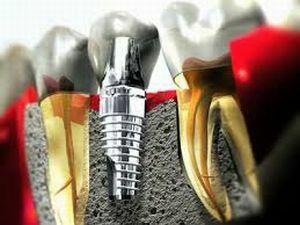
- Absence of the last molars .
- Intolerance to removable dentures due to pronounced emetic reflex and hypersensitivity to structural elements.
- Functional occlusion of .
- Adentium .In this case, implantation has a number of advantages over other orthopedic methods of therapy, since it can be carried out regardless of the height of the alveolar processes.
The installation of dental implants passes in several stages:
- examination of the patient;
- preparatory;
- surgery;
- abutment installation;
- orthopedic.

Inspection of the patient
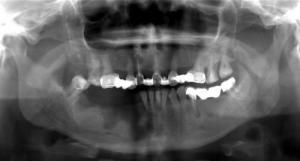 At this stage, the doctor examines the patient, collects a complete history, identifies contraindications to surgery, predicts possible complications after implant placement.
At this stage, the doctor examines the patient, collects a complete history, identifies contraindications to surgery, predicts possible complications after implant placement.
Tells the patient to take a number of tests:
- a common blood and urine test,
- coagulogram;
- blood for sugar, HIV, hepatitis B and C, syphilis;
- blood for biochemistry;
- X-ray.
The test results are valid for no more than 2 weeks. Depending on the concomitant diseases, the doctor may prescribe additional examinations.
Assessment of the patient's health
Contraindications to implantation may be absolute and relative.
Absolute contraindications include:
- oncology;
- increased tonus of the chewing muscles;
- congenital and acquired CNS pathology;
- bleeding disorders;
- age to 18 years;
- mental disorders, alcohol and drug dependence;
- severe diseases of internal organs;
- uncompensated diabetes mellitus;
- all forms of tuberculosis;
- severe forms of osteoporosis;
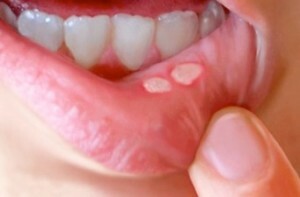
- systemic pathology of connective tissue;
- primary and secondary immunodeficiencies;
- some diseases of the oral cavity, for example, chronic aphthous stomatitis;
- allergy to anesthetics.
Relative contraindications include:
- period of pregnancy and lactation;
- smoked more than a pack of cigarettes per day;
- compensated diabetes mellitus;
- gnashing of teeth;
- poor oral hygiene;
- presence of carious cavities;
- incorrect bite;
- arthoso-arthritis of the temporomandibular joint.
In the absence of contraindications to surgical intervention, the next stage of implantation is passed.
Preparation for surgical intervention
The doctor examines the patient's mouth. When detecting carious teeth, they are treated, old crowns are replaced with new ones. If the patient has gum disease, then they also need to be cured first and then proceed with the operation.
To detect hidden diseases of the jaw and gums, and to determine where and how to implant the pin, computer tomography of the jaw is made and make a panoramic image.
After preparation, you can go to the implantation itself.
Installation of the implant
If the patient has a deficiency of bone tissue, then resort to the procedure of sinus-lifting, i.e.bone building.
Since the years the mass of bone tissue decreases, it becomes weaker and porous. Reduction of bone occurs if much time has elapsed between tooth loss and implant installation.
The bones of the jaw during the sinus-lifting are increased in three projections: in height, width and length. All this can last no hour. After this, the accrued bone should settle down, it can take more than three months.
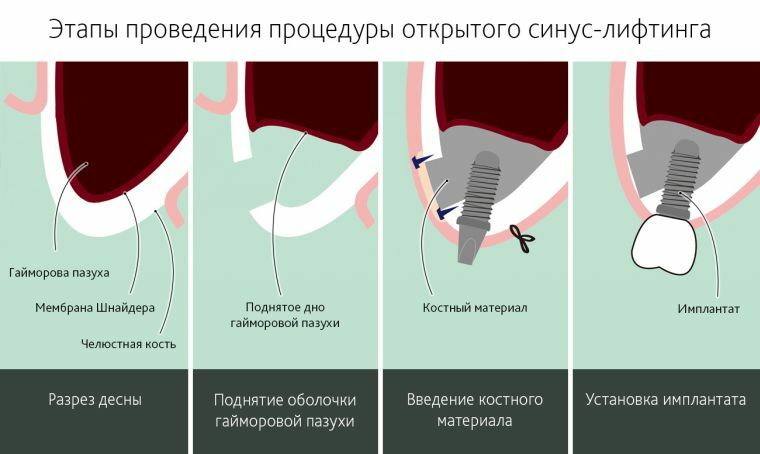
There are some implant technologies, in which it is possible to install a prosthesis without additional bone extension.
Once the bone tissue has fully healed, proceed to the installation of an artificial root. To do this, depending on the variety of the implant, the gum is cut or pierced, the insert is inserted into the resulting cavity and a cap is screwed into it to protect the implant during healing. Next, the gum is sewed up or if there was a puncture, heals independently.
The procedure of installation, depending on the method and type of implant, takes from 30 minutes to several hours. Then, from several months to a year, the design takes root.
In some cases, using modern methods of implantation, this period is reduced to several days. After that, the implant will fully take root, go to the next stage.
Installing the abutment
Only the implant is securely attached to the bone, the cap is unscrewed and the abutment is installed on the abutment, which is necessary for binding the dental implant and the bridge.
Today some versions of implants are produced immediately with abutments. After this, make a cast of the jaw and proceed to the final stage.
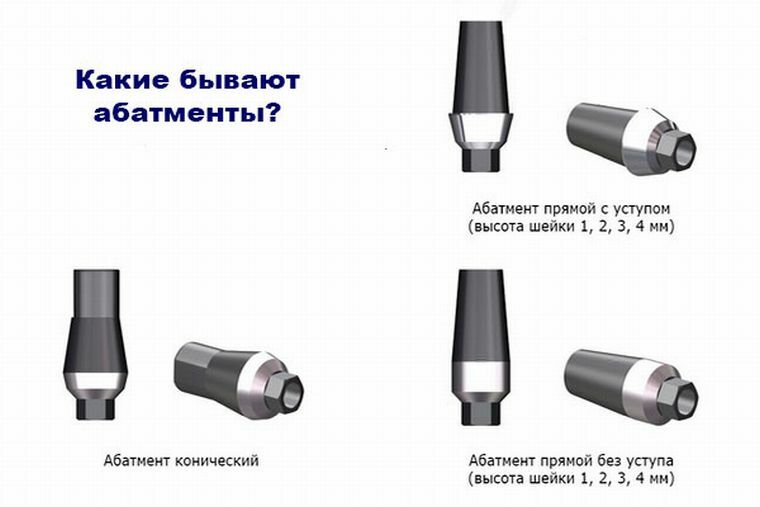
Installation of the prosthesis
A crown or a bridge structure resembling a dentition line is made on the impression of the jaw. Choose a shade of artificial teeth. The prosthesis can be removable or non-removable.
By the time the process takes several hours, including the manufacturing time of the prosthesis itself.
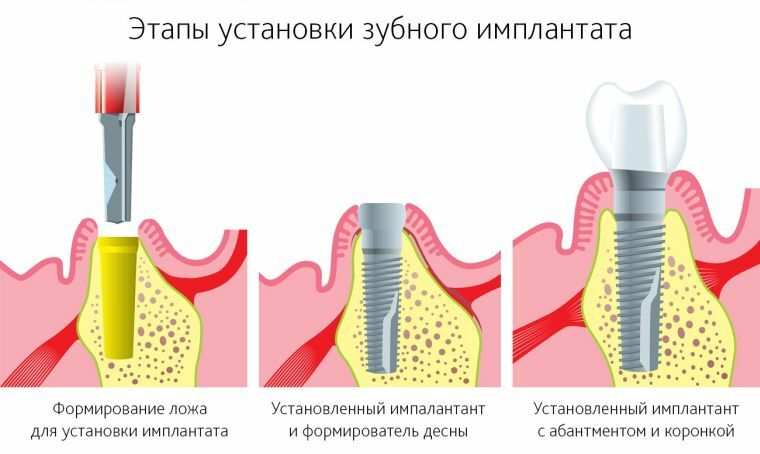
How is dental implantation - visual video:
Anesthesia during treatment of
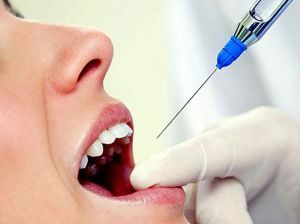 Most patients are concerned about how much it is painful to insert a tooth implant. The pharmaceutical industry produces quality drugs for local anesthesia, due to which pain and discomfort during the surgical intervention is almost not felt.
Most patients are concerned about how much it is painful to insert a tooth implant. The pharmaceutical industry produces quality drugs for local anesthesia, due to which pain and discomfort during the surgical intervention is almost not felt.
If the patient still has a fear of the operation, the doctor can perform a medication sedation. The patient is given a sleeping pill and sometimes anesthetic drug and a person is in a state of superficial sleep and can be awakened quickly.
That is, the entire procedure is performed during sleep with local anesthesia.
The following are worthy of merit:
- does not suffer from neighboring teeth;
- metal pins can be installed in the absence of both a few teeth and the entire dentition;
- long life of prostheses, for many before the end of life.
Among the shortcomings can be noted the following:
- a large number of contraindications;
- high cost;
- treatment itself from the installation of an artificial root before the installation of the prosthesis can last up to a year;
- implants can cause a number of complications in the body.
Until recently, a person who lost one single tooth could count on the installation of a crown or a bridge structure that 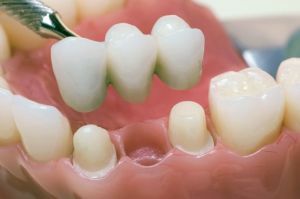 caused at least damage to two nearby teeth.
caused at least damage to two nearby teeth.
And if more teeth were lost, then the dentition could be restored with a removable prosthesis, while all the remaining healthy teeth were removed. That significantly worsened the quality of life of patients.
During implantation, it is possible to restore the lost tooth without destroying the remaining teeth. Implants allow not only to fully restore the chewing function, but also to restore the dentition to its former attractiveness and make the smile irresistible.
